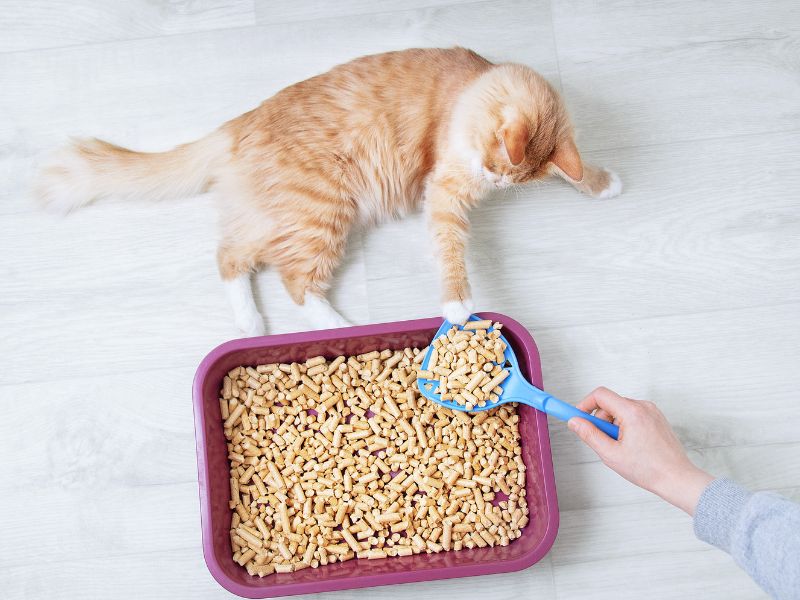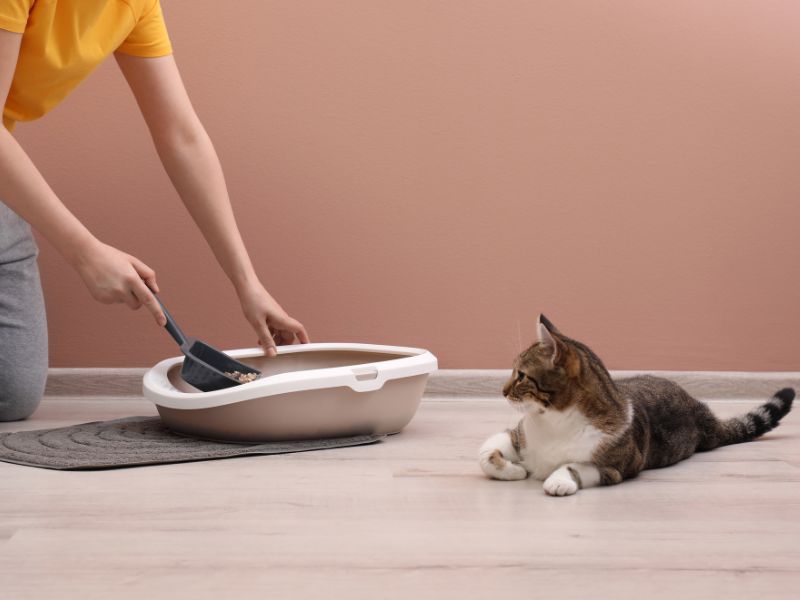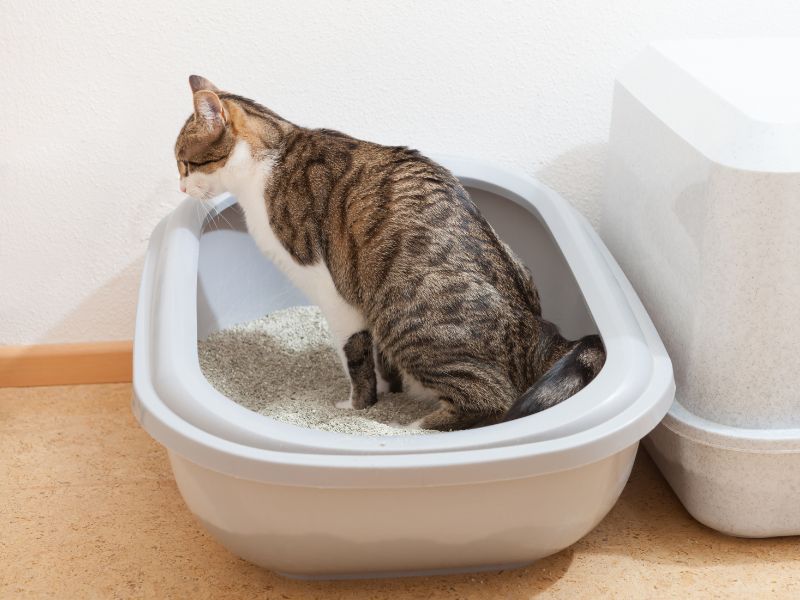Are you tired of constantly cleaning up after your cat’s bathroom habits? Do you want to train your furry friend to use a litter box instead of your carpet or furniture? Look no further, because we’ve got you covered! Training your cat to use a litter box can be a daunting task, but with a little patience and persistence, it can be a stress-free experience for both you and your pet. In this article, we’ll provide you with some expert tips and tricks on how to train your cat to use a litter box, including choosing the right litter box, selecting the best litter, and encouraging your cat to use it consistently. So, sit back, relax, and get ready to say goodbye to those messy litter accidents once and for all!
Why is Litter Box Training Important for Cats?
Litter box training is essential for cats, as it provides them with a designated area to go to the bathroom. It also helps prevent accidents and keeps your home clean and odor-free. Additionally, litter box training can help you monitor your cat’s health, as you can easily detect any changes in their urine or feces. Cats are naturally clean animals and prefer using a litter box, so training them to do so is not only beneficial for you, but also for your cat’s well-being.
Understanding Your Cat’s Behavior
Before you begin litter box training, it’s important to understand your cat’s behavior. Cats are territorial animals and prefer a quiet and private area to do their business. Make sure the litter box is placed in a location where your cat feels safe and secure. Additionally, cats are creatures of habit and prefer consistency. Once you have chosen a location for the litter box, make sure to keep it there and avoid moving it around.

Choosing the Right Litter Box and Litter
Choosing the right litter box and litter is crucial for successful litter box training. There are various types of litter boxes available in the market, including open, covered, and self-cleaning litter boxes. Open litter boxes are the most common and preferred by cats, as they provide easy access and allow them to see their surroundings while they do their business. Covered litter boxes provide privacy but can be uncomfortable for some cats, especially in hot weather. Self-cleaning litter boxes are a great option for busy pet owners, but they can be expensive.
Next, select the right litter for your cat. There are different types of litter available, including clay, clumping, crystal, and natural litter. Clay litter is the most common and affordable, but it can be dusty and produce a strong odor. Clumping litter is easy to clean and absorbs moisture and odor, but it can be harmful if ingested by your cat. Crystal litter is low-dust and absorbs moisture well, but it can be expensive. Natural litter, made from materials such as corn or wheat, are eco-friendly and safe for your cat, but it can be pricey.
Introducing Your Cat to the Litter Box
Once you have chosen the right litter box and litter, it’s time to introduce your cat to the litter box. Place the litter box in a quiet and private area, away from your cat’s food and water bowls. Show your cat the litter box and let them explore it at their own pace. If your cat is hesitant to use the litter box, try placing some of their feces or urine in the litter box to attract them to it.
Encouraging Your Cat to Use the Litter Box
Encouraging your cat to use the litter box consistently is key to successful litter box training. Try to establish a routine and encourage your cat to use the litter box at the same time every day. When your cat successfully uses the litter box, reward them with treats or praise. If your cat has an accident outside of the litter box, do not punish them, as this can create a negative association with the litter box.
Addressing Litter Box Problems
If your cat is consistently avoiding the litter box or having accidents outside of it, there may be an underlying issue that needs to be addressed. Make sure the litter box is cleaned regularly, as cats are clean animals and prefer a clean litter box. Additionally, if you have multiple cats, make sure to provide each cat with its own litter box, as some cats are territorial and do not like sharing.
If your cat is still having issues using the litter box, consult with your veterinarian to rule out any medical issues. Urinary tract infections or other health problems can cause your cat to avoid the litter box or have accidents outside of it.

See Also: Comprehensive Guide to Owning a Cat
And: Why Senior Cats Make the Perfect Companion
Litter Box Maintenance and Cleaning
Maintaining and cleaning the litter box is an important part of litter box training. Scoop out any feces and clumps of litter daily and replace the litter every two to three weeks. Wash the litter box with mild soap and water every time you replace the litter, and avoid using harsh chemicals that can harm your cat. Additionally, wear disposable gloves, or make sure to wash your hands thoroughly after cleaning the litter box, to prevent the spread of bacteria.
Common Mistakes to Avoid When Litter Box Training
There are some common mistakes pet owners make when litter box training their cats. Avoid these mistakes to ensure a successful and stress-free litter box training experience for you and your cat.
- Placing the litter box in a high-traffic area or near noisy appliances, such as washing machines or dryers.
- Using scented litter or harsh chemicals to clean the litter box.
- Punishing your cat for accidents outside of the litter box.
- Moving the litter box around or changing the type of litter too frequently.
Training Multiple Cats to Use the Same Litter Box
If you have multiple cats, litter box training can be a bit more challenging. Make sure to provide each cat with their own individual litter box, as some cats are territorial and do not like sharing. Additionally, make sure the litter boxes are placed in separate locations to provide each cat with privacy.
Conclusion
Litter box training can be a daunting task, but with a little patience and persistence, it can be a stress-free experience for both you and your pet. Understanding your cat’s behavior, choosing the right litter box and litter, and encouraging your cat to use it consistently are key to successful litter box training. Remember to avoid common mistakes, maintain and clean the litter box regularly, and provide each cat with their own litter box if you have multiple cats. With these tips and tricks, you’ll be well on your way to a happy and healthy litter-trained cat.

